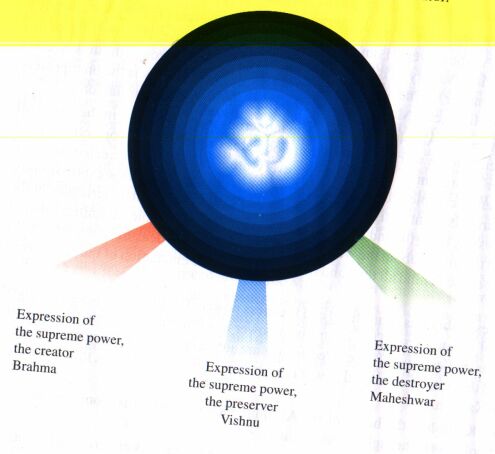
Gods and Goddesses are sometimes referred to as Aumkar, which means Form of Aum, thus implying that they are limitless, the vibrational whole of the cosmos. Ek Onkar, meaning 'one god' is a central tenet of Sikh religious philosophy. In Hindu metaphysics, it is proposed that the manifested cosmos (from Brahman) has name and form (nama-rupa), and that the closest approximation to the name and form of the universe is Aum, since all existence is fundamentally composed of vibration. This is considered by some to be reminiscent of some current physical theories such as quantum physics and super string theory, which describe the universe in terms of vibrating fields or strings.
It is frequently used to represent three subsumed into one, a common theme in Hinduism. It implies that our current existence is mithya, or 'slightly lesser reality,' that in order to know the full truth we must comprehend beyond the body and intellect and intuit the true nature of infinity, of a Divine Ground that is imminent but also transcends all duality, being and non-being, that cannot be described in words. Within this metaphysical symbolism, the three are represented by the lower curve, upper curve and tail of the ॐ subsumed into the ultimate One, represented by the little crescent moon-shape and dot, known as chandrabindu. Essentially, upon moksha, mukti, samadhi, nirvana, liberation, etc. one is able not only to see or know existence for what it is, but to become it. In attaining truth one simply realizes fundamental unity; it is not the joining together of a prior manifold splitting. When one gains true knowledge, there is no split between knower and known: one becomes knowledge/consciousness itself. In essence, Aum is the signifier of the ultimate truth that all is one.